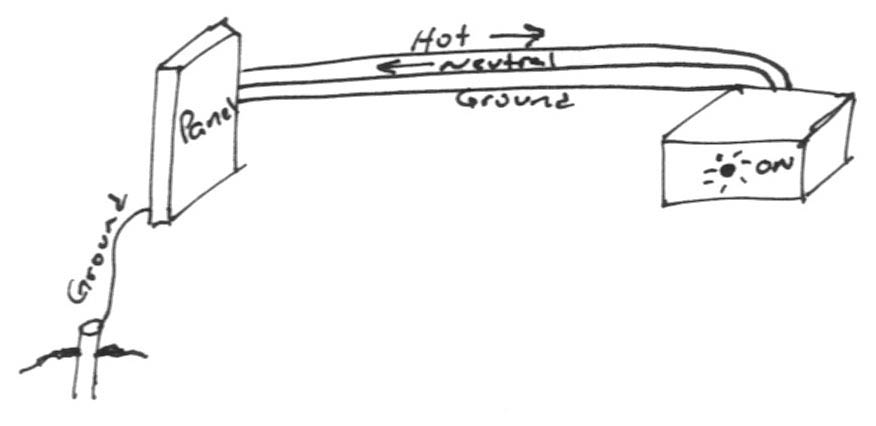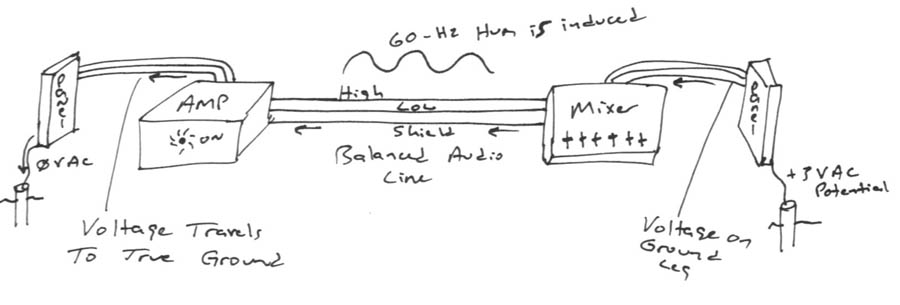The topic for today’s post comes from a reader, Jonathan Mould.
He wanted to know more about the electrical side of sound. This is an interesting topic because sound is both electrical and physical.
Sound systems turn physical movement of air into electrical signals, then process and amplify those signals (sometimes changing them into streams of 1s and 0s and back), and finally turn those amplified signals back into physical air movement. It’s all kind of crazy when you think of it that way.
I started this post thinking I could tackle three topics and realized that even a cursory explanation of ground loops would take a whole post. So, you’re witnessing the beginning of a series here. First up, ground loops.
To understand ground loops, one must first understand electricity. A full explanation is beyond the scope of this article, but here’s a brief description. Standard 120 volt circuits consist of three leads; a hot (current carrying) lead, a neutral (the return) and a ground.
To vastly over-simplify, the electricity leaves the panel on the hot lead, travels to the appliance, does some work and returns to the panel on the neutral. The ground is properly called a safety ground and serves one basic function—to send any electricity right back to a safe place (the earth) if anything goes wrong inside the appliance. This is a preferred outcome (as opposed to sending said accidental electricity through your body to the earth).

Electricity always wants to get back to ground, or earth, and will always take the path of least resistance. Should there be a short inside an appliance, the chassis of said appliance could become energized. If you touched it and happened to be providing a good path to ground, that current will flow through you. Since it only takes about 20 milliamps to stop your heart, it’s very possible that a short like that could kill you. This is why we never solve ground loops with “cheater plugs” that effectively lift the safety ground.
But I’m getting ahead of myself. In an ideal world, the ground wire in a circuit would have zero voltage potential. That is to say that if you put a voltage meter on the ground wire and tested for voltage to a “true” ground, you would get zero volts. In complex electrical systems like we might find in a church or theater, it’s possible to have a few volts of voltage potential on the ground bus (all the ground wires connect back to a ground bus, which is connected to a ground rod—at least they’re supposed to be).
In a large enough system, you could have multiple ground buses and grounding points, each with slightly different voltage potentials. Now, we’re only talking about a few volts here, and for most equipment attached to this electrical system, it’s no big deal. However, in the world of sound, it can cause havoc.

Remember that we send audio signals to and fro with balanced lines. A balanced line consists of a high lead, a low lead (the signal carrying pair) and a shield. The shield ultimately gets connected to the chassis of the audio equipment, say an amp or a mixer. Also connected to the chassis is the power ground connector.





















